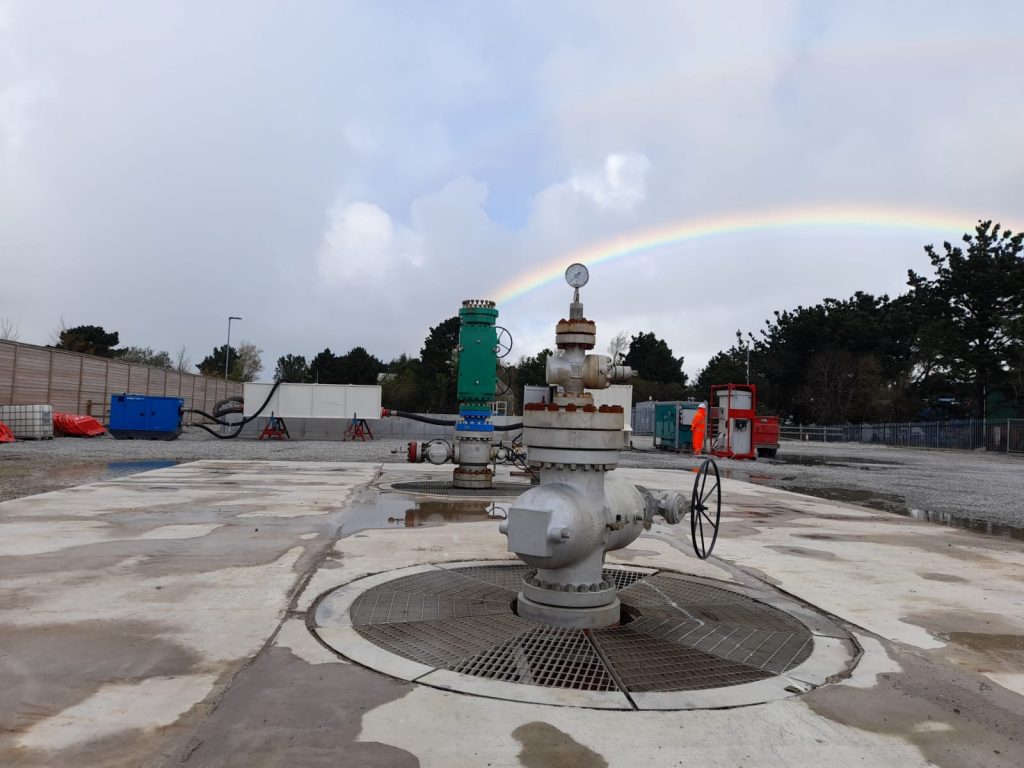Four new geothermal projects announced for Cornwall, UK

Geothermal Engineering Ltd and Thrive Renewables announces plans for four additional geothermal heat and power projects in the UK, with planned 20 MWe and 100 MW thermal by 2026.
In a release shared this morning, UK-based geothermal developer Geothermal Engineering Ltd (GEL), the company behind UK’s first deep geothermal electricity power plant, announced that it will be rolling out four new deep geothermal power plants in Cornwall. In addition, GEL’s proof of concept power plant on the United Downs Industrial Estate in Cornwall is now producing the UK’s first geothermal steam using 175C water extracted a record-breaking 5.1 kilometers underground. The company is signed power and heat agreements in January of this year.
Heads of Terms have now been signed on the four new geothermal sites planned for Cornwall, each anticipated to deliver 5 MWe (Mega Watt electrical) of power, 24/7 to the National Grid and 20 MW of heat energy for the local area. The electricity produced from all four power stations will be enough to power 45,000 homes. Each plant will each take around 18 months to complete, with all four sites anticipated to be up and running by 2026.
GEL and Thrive Renewable’s pioneering geothermal plant at United Downs is now producing geothermal steam at 175C which will be converted to deliver approximately 3 MWe of power to the National Grid and is on track to deliver its first electricity during 2022. The Cornwall Geothermal Distillery Company is in the approval processes to utilise 2.5MW of the hot water the plant is expected to produce. Up to 10MW of heat is also expected to be used in a large housing development planned at Langarth.
Ryan Law, Managing Director of Geothermal Engineering Ltd said: “This is an incredibly exciting time for deep geothermal energy in the UK as we transition from oil and gas and tap into this huge renewable power resource. We have proved the technology works at United Downs, we have progressive funding in place, and we now have four additional sites, which our experienced team is ready to start work on. Over the next 20 years, our target is to produce in excess of 500 MW of power from geothermal resources making this one of the most significant and reliable baseload power sources in the UK.”
Matthew Clayton, Managing Director of Thrive Renewables plc said: “As the UK produces increasing amounts of variable renewable energy like wind and solar power, this form of baseload power production plays an essential role in stabilising and securing our power supply. We are delighted to have backed geothermal in the UK at an early stage at United Downs and firmly believe that geothermal energy will form a valuable part of the UK’s future energy mix.”
Cornwall Council cabinet portfolio holder for the economy Stephen Rushworth said: “We are excited to support this emerging industry as it continues to take shape in Cornwall, and to realise the benefits it will deliver for the residents of Cornwall. Unlike almost any other form of energy production, geothermal heat energy must be used close to its source. This means that new plants will benefit local communities by attracting new business, jobs and inward investment, as well as offering the potential for delivering local heat networks for residents. Our initial focus, part funded by the governments Heat Network Delivery Unit (HNDU), will be to supply a proposed new housing development of 3800 homes and commercial buildings at Langarth Garden Village.”
To develop each of the future geothermal power plants, two deep wells will be drilled into the granitic rock beneath the site, the deepest of which will reach upwards of 4.5 kilometers. Water is then pumped from the deepest well where temperatures are expected to be approximately 180C. The steam produced is then fed through a heat exchanger at the surface and water is then re-injected into the ground to pick up more heat from the rocks in a continuous cycle. The extracted heat will be converted into electricity and supplied to the National Grid. The electricity and heat energy produced by this type of low carbon, renewable energy source is continuous (24/7) as geothermal energy does not generate in peaks and troughs as many other sustainable power sources are subject do.
Source: Company release by email